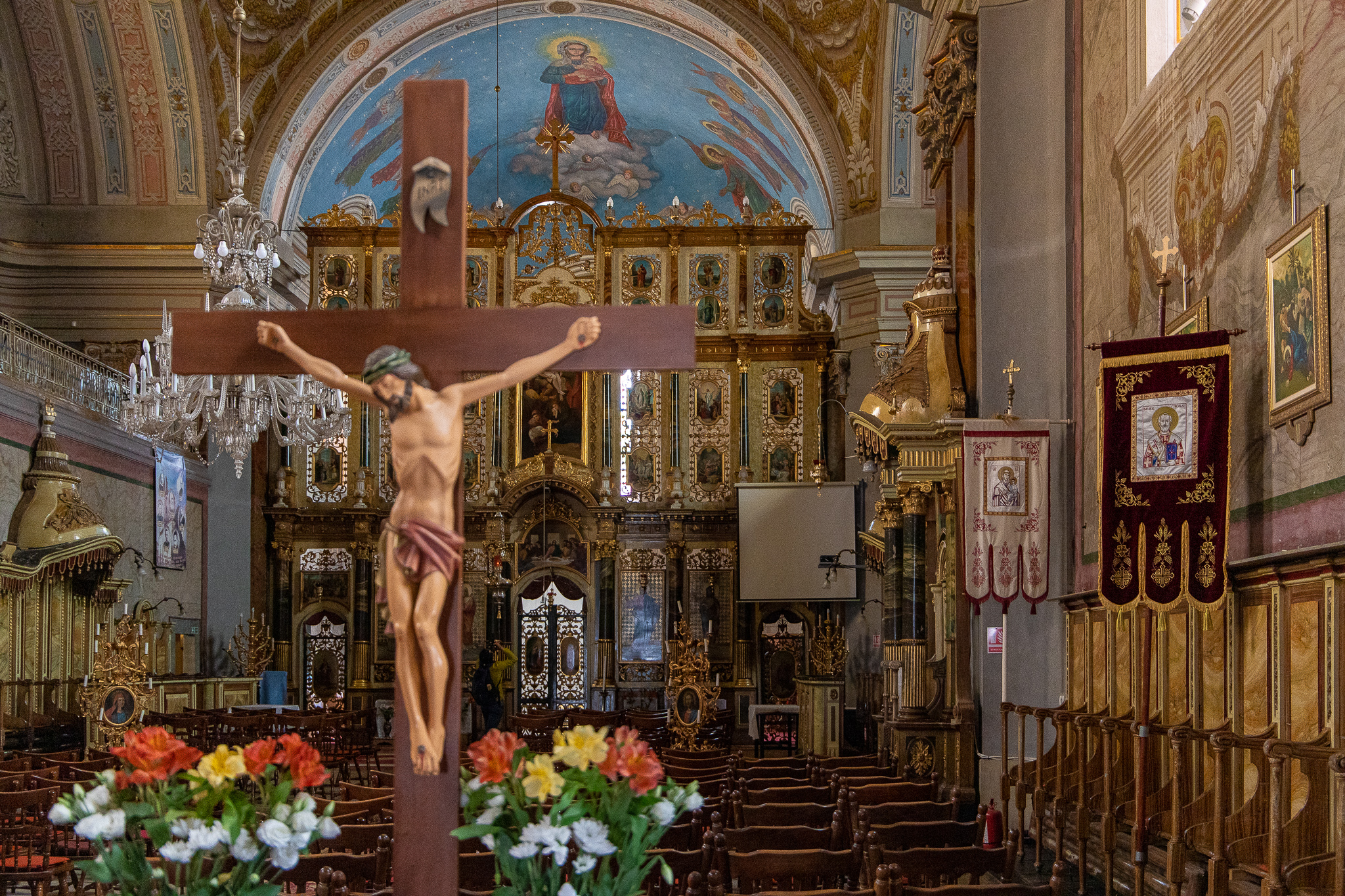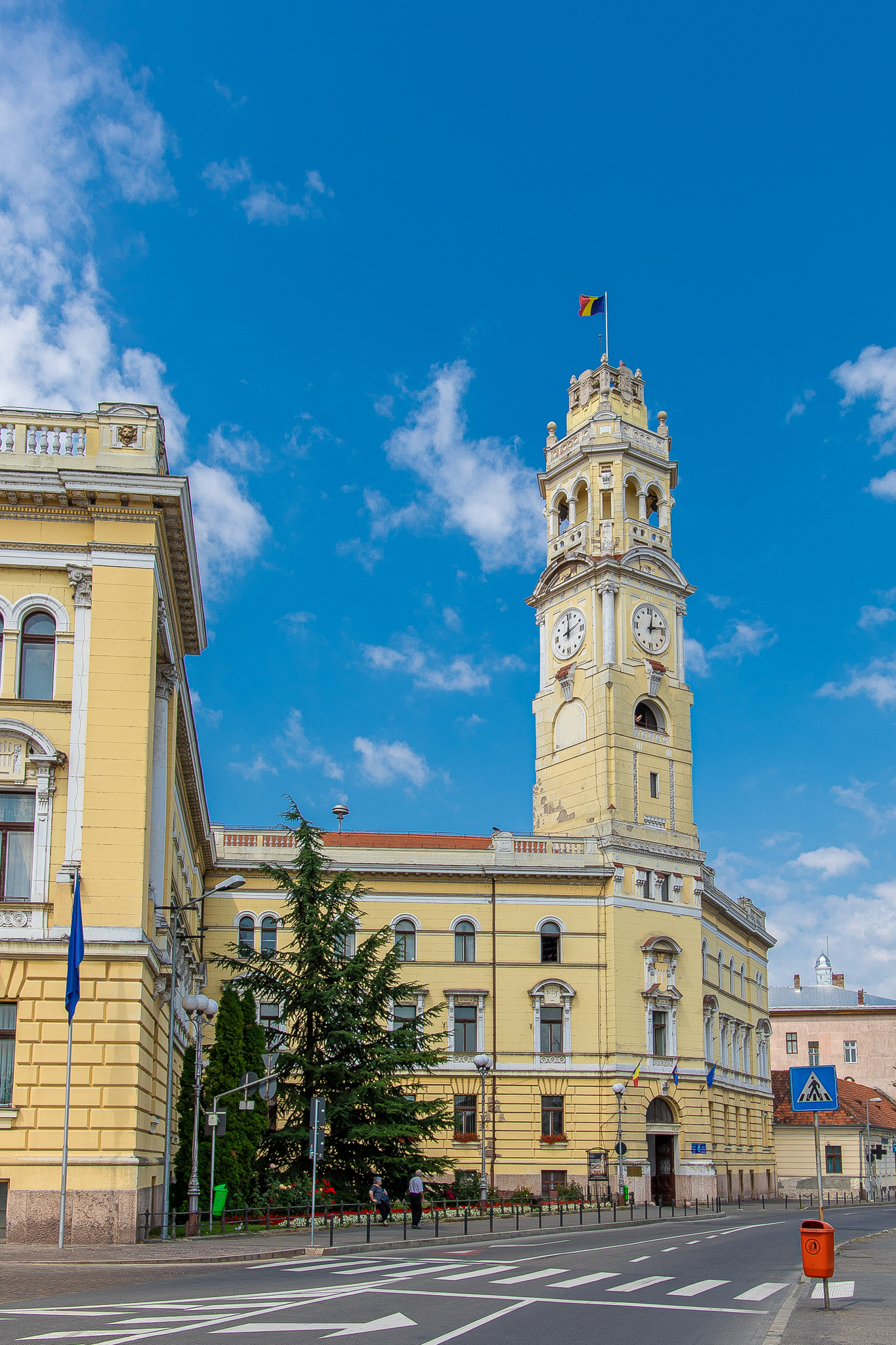Oradea has come a long way since it was first inhabited at the end of the Middle Palaeolithic, some time around about 50,000 BC to 35,000 BC. Originally called Nagyvárad when it only consisted of a small 10th century castle, and then the Latin Varadinum from the early 12th century AD, it wasn’t until the 14th century AD that it really flourished. Fast forward to the second half of the 19th century AD and the town had acquired nicknames such as the "Hungarian Compostela", "Paris on the River Pece", "Athens on the Körös", and "the City of Tomorrow". Communist rule might’ve stymied its progress since then, but there’s no denying that this is an up and coming destination full af rich Art Nouveau buildings that rivals anything else going around.
Union's Square (Piata Unirii), or St. Ladisla's Square as it was known before World War II, is definitely the place to see Oradea at its magnificent Art Noveau best. Crowded around what is quite a significantly sized and recently tarted up square, are the main touristic sights, including the City Hall, Moon Church, Greek Catholic Bishop’s Palace and St Iearh Nicolae Church. Chuck in the town square’s oldest church St Ladisla’s, of the Roman Catholic persuasion, and that’s a lot of sightseeing jampacked into one area.
In the centre of all this wonder, is the statue of King Ferdinand, the King of Romania from 1914 until 1927. Nicknamed the Ferdinand the Unifier, the king was German born and wisely sided with the Allies against the Central Powers in World War I, which resulted in Romania gaining a number of terreritories at War’s end including Bessarabia, Bukovina, Transylvania and Crisana, the historic region which Oradea resided in.
King Ferdinand the Unifer, with the Roman Catholic Church of Saint Ladislau off to the right
One of the more intereting churches we’ve visited so far is The Assumption of Mary Church, otherwise known as Biserica cu Luna or the Moon Church. Built in the late 18th century, although not consecrated until four decades later when the interior paitning was finally finished, the church is best known for its moon mechanism tha rotates around its axis in 28 days, indicating the phase of the moon. Amazingly clever, we checked out its accuracy later that night and happy to report that after 250 years, it is still accurate.
The Moon Church
Opposite the Moon Church is the Saint Nicholas Greek-Catholic Cathedral that was built in classic Baroque style around the same time.
St Nicholas Cathedral
The interior is beautifully decorated in Byzatine Greek-Orthodox style and well worth admiring.
interior of St Nicholas Cathedral
At the northern end of the square is the City Hall Palace. The Palace consists of the Town Hall and Clock Tower, which is situated just around the corner and can be climbed for 5 lei for views out over the city.
Town Hall
The Clock Tower
Another interesting attraction, also situated just off Union’s Square is the Black Eagle Palace. Going by the name Vulturul Negru, the “Palace” was built at the location of what used to be the old Black Eagle Inn during the early 20th century.
Looking towards the Black Eagle Palace
Entrance to the Black Eagle Palace
These days you can wander through what is a now a converted shopping gallery with its glass roof and beautiful stained window and what are supposed to be boutique shops. Unfortunately, a lot of the shops look closed and the “Palace” has an almost deserted feel to it detracting from the overall beauty on the place.
Stained black eagle windown inside the palace
Walking out the other side of the palace will take you to a nice pedestrianised cobbled street with a range of eateries, which also is a great place to grab some coffee.
Coffee time
Away from Union’s Square, the rest of Oradea is still easily covered by foot. From one of the many bridges that cross the Crișul Repede we got some good views of Neolog Synagogue (Zion Synogogue). The synagogue was built after the Jewish community of Oradea split between Orthodox Jews and Neolog or Congress Jews in the late 19th century. The outcome of the split was the large synagogue that stands on the banks of the river that runs through Oradea.
The Zion Synagogue
While there are plenty more of sights around Oradea to see, perhaps the most visually striking is the Queen Marie Theater (State Theater) situated beside Piata Ferdinand. Whilst there was a fair amount of construction going on when we visited, it didn’t detract too much from the outstanding beauty of the building.
The State Theater
Oradea has been a great first introduction to Romania. With plenty of compelling sights, on top of the amazing hospitality that we’ve received, it’s going to be hard to top this super city. As we journey into Transylvania proper, however, we’re about to see whether that is possible.














